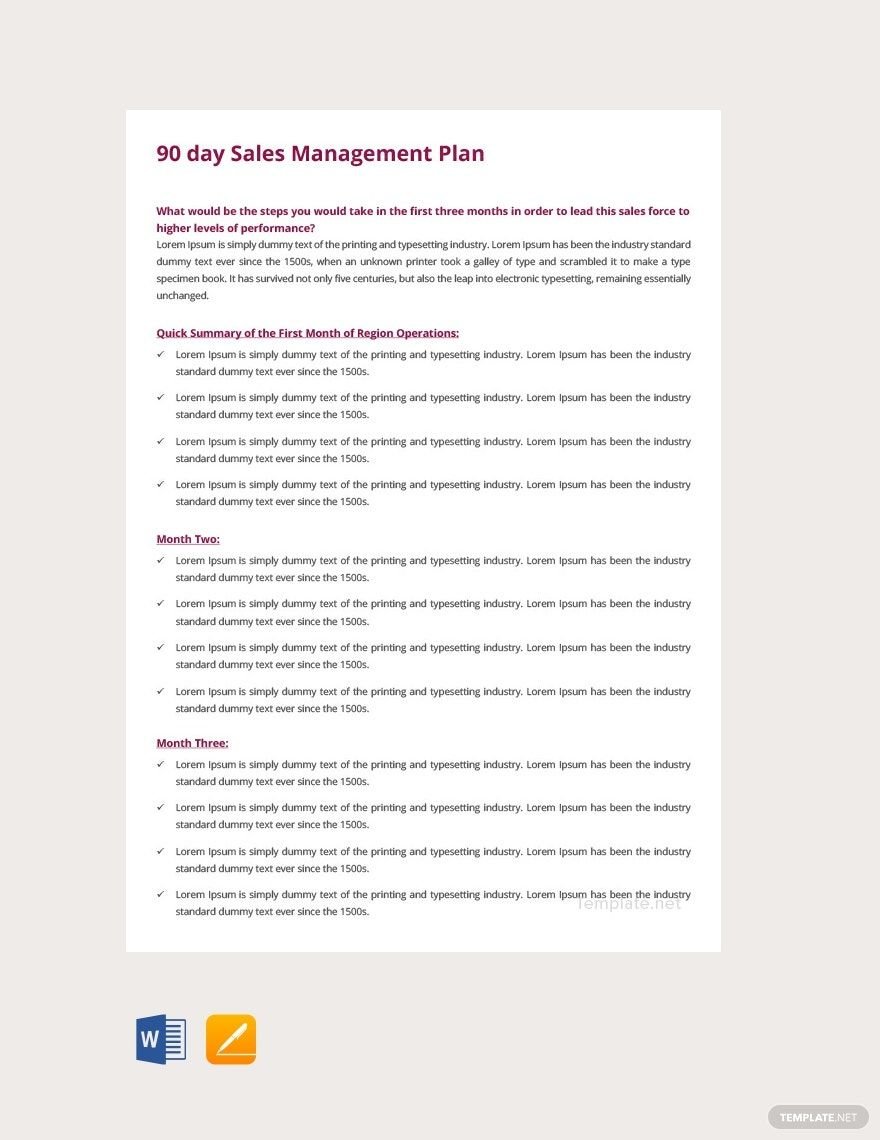Make your strategic vision come to life with 90 Day Sales Plan Templates from Template.net.
Keep your sales team engaged, achieve your revenue goals, and streamline your planning process with our expertly designed templates. Perfect for sales managers and professionals who want to develop a clear roadmap, these templates empower you to target specific milestones and outline actionable steps for success. Use our plans to promote a new product launch or to realign sales strategies for an existing product. Each template includes key elements such as timeline visuals, goal-setting sections, and contact fields to ensure your team remains on track and communicates effectively. No extensive design skills required—just customize text and elements to fit your needs. Best of all, our templates offer a professional-grade design at no cost, ideal for either digital distribution or printed handouts.
Discover the many 90 Day Sales Plan Templates we have on hand, tailored to help you strategize with precision and clarity. Simply select from a range of professionally designed templates, seamlessly swap in your company's branding assets, and tweak colors and fonts to align with your corporate style. To add a personal flair, drag-and-drop icons and graphics, animate sections to capture attention, and utilize AI-powered text suggestions for persuasive copy. The possibilities are endless, and it's all skill-free, making strategic planning an enjoyable and easy process. Our library is regularly updated with new designs to ensure you have access to the latest trends and strategies. When you're finished, download or share your plan effortlessly via link, print, or email, making it ideal for multiple channels and easy collaboration in real time.




